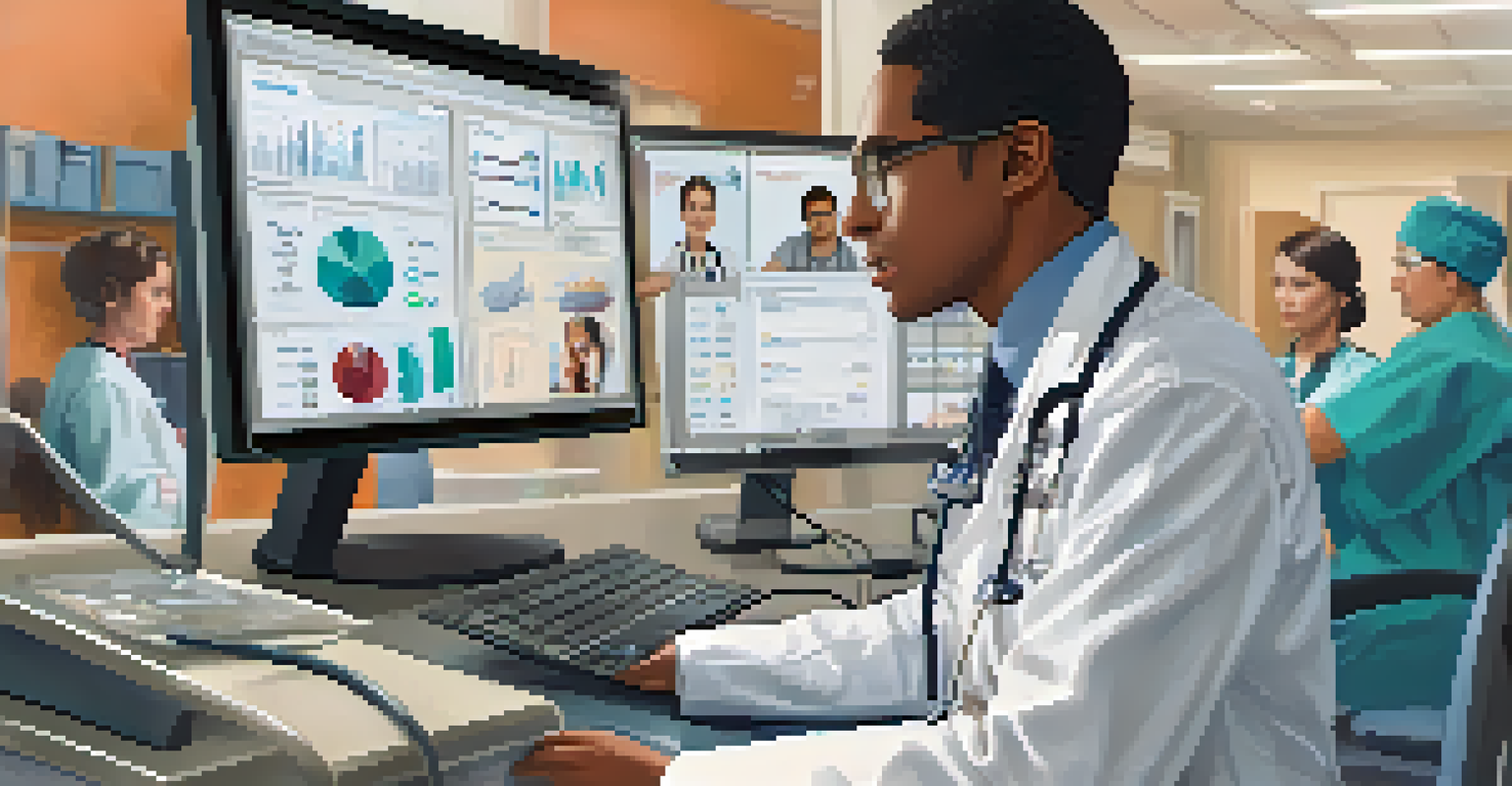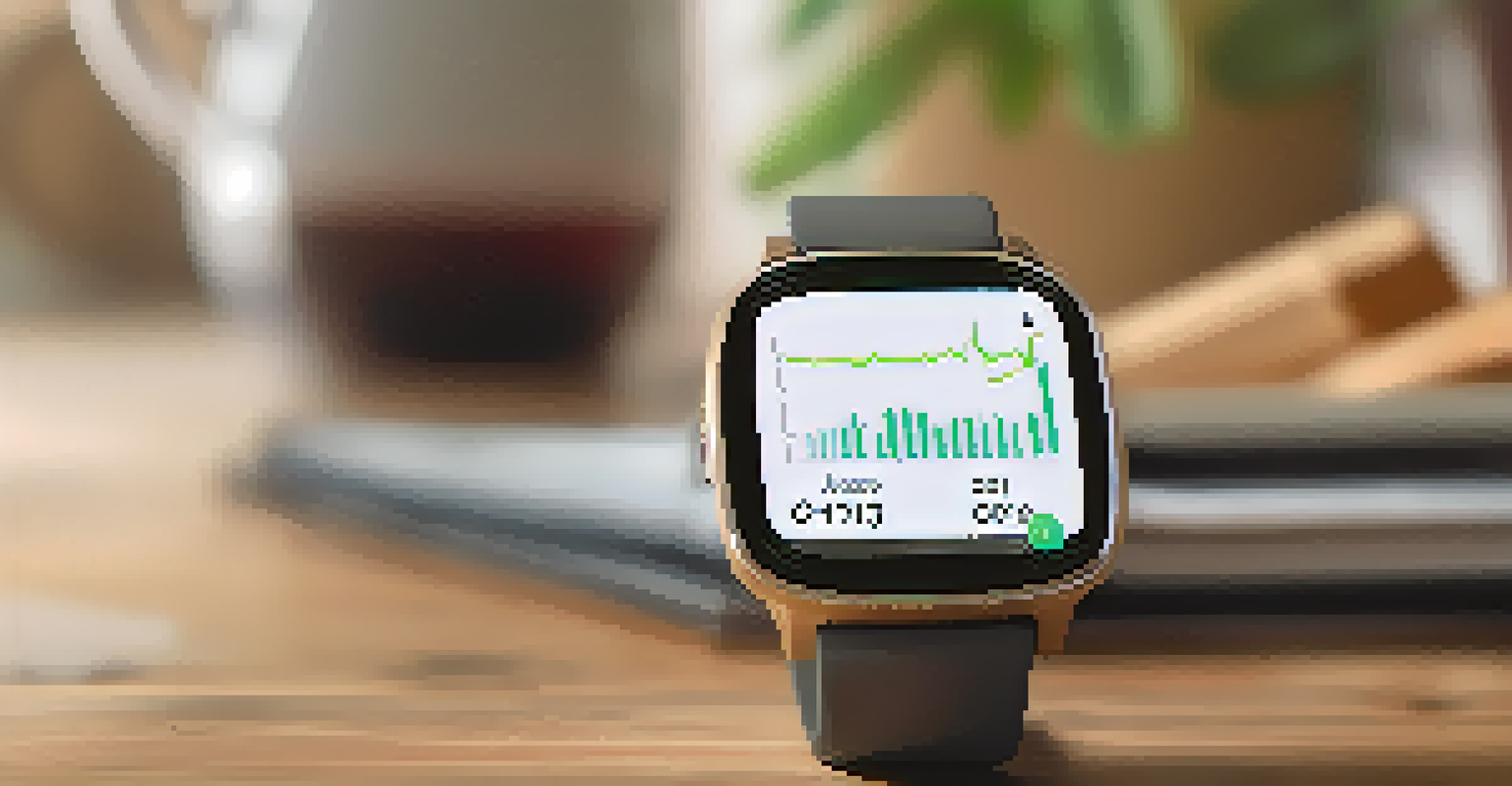Remote Monitoring: Revolutionizing Patient Health Management

Understanding Remote Monitoring in Healthcare
Remote monitoring refers to the use of technology to monitor patients' health data from a distance. It allows healthcare providers to keep track of vital signs like heart rate, blood pressure, and glucose levels without requiring patients to visit a clinic. This approach is particularly beneficial for managing chronic conditions, as it provides continuous insight into a patient’s health status.
The future of healthcare is not about the hospital, it's about the home.
Imagine a patient with diabetes who can check their blood sugar levels from home and share that data with their doctor in real-time. This not only empowers patients to take control of their health but also enables doctors to make timely interventions when necessary. With the right tools, both parties can work together to ensure optimal health outcomes.
Moreover, remote monitoring can significantly reduce healthcare costs by minimizing unnecessary hospital visits and improving overall patient engagement. As technology continues to evolve, the applications of remote monitoring are becoming more sophisticated and accessible, paving the way for a new era in patient care.
Key Technologies Driving Remote Monitoring
Several technologies are at the forefront of remote monitoring, including wearable devices, mobile apps, and telehealth platforms. Wearables like smartwatches and fitness trackers can collect vital data seamlessly throughout the day. These devices not only monitor physical activity but also track metrics like heart rate and sleep patterns, providing a comprehensive view of a patient's health.

Mobile apps further enhance this experience by allowing patients to log symptoms, medication adherence, and lifestyle habits. This data can be easily shared with healthcare providers, creating a collaborative environment for health management. For instance, a patient can use an app to notify their doctor if they notice troubling symptoms, enabling prompt action.
Remote Monitoring Enhances Care
Remote monitoring empowers patients and healthcare providers to engage in real-time health management, improving overall outcomes.
Telehealth platforms also play a crucial role by facilitating virtual consultations between patients and healthcare providers. This means that patients can receive professional advice without the need to travel, making healthcare more accessible and immediate. Together, these technologies create a robust framework for effective remote monitoring.
Benefits of Remote Monitoring for Patients
One of the most significant advantages of remote monitoring is the empowerment it provides to patients. By taking an active role in their health management, patients can make informed decisions based on real-time data. This engagement often leads to improved adherence to treatment plans and better health outcomes.
Remote monitoring is a key component in the evolution of patient care, allowing for a more proactive approach to health management.
Additionally, remote monitoring can enhance the quality of life for patients with chronic conditions. For example, patients with heart disease can monitor their heart rate and receive alerts if abnormalities are detected, allowing for quicker responses to potential issues. This proactive approach reduces hospitalizations and fosters a sense of security.
Moreover, remote monitoring can lead to more personalized care. With continuous data, healthcare providers can tailor treatment plans to each patient's unique needs. This individualized approach not only increases the effectiveness of interventions but also helps build stronger patient-provider relationships.
Challenges in Implementing Remote Monitoring
While the benefits of remote monitoring are clear, there are challenges that healthcare providers must navigate. One major hurdle is the integration of technology into existing healthcare systems. Ensuring that all stakeholders—patients, doctors, and administrators—are on the same page can be complex and requires ongoing training.
Another challenge is addressing data privacy and security concerns. With the increase in health data being transmitted over the internet, ensuring that this information is safeguarded against breaches is paramount. Patients must feel confident that their personal health information is protected, which requires robust security measures.
Key Technologies Enable Monitoring
Wearable devices, mobile apps, and telehealth platforms are essential technologies that facilitate effective remote monitoring.
Lastly, the digital divide can pose a significant barrier. Not all patients have equal access to technology or the internet, which may limit the effectiveness of remote monitoring. Healthcare providers must find ways to include these populations in remote care strategies, ensuring equitable access to health management tools.
The Role of Healthcare Providers in Remote Monitoring
Healthcare providers play a critical role in the success of remote monitoring initiatives. They must not only adopt the technologies but also educate their patients on how to use them effectively. This includes demonstrating how to wear devices properly, interpret data, and understand when to seek help.
Moreover, providers need to be proactive in analyzing the data received through remote monitoring. Regularly reviewing patient data allows healthcare professionals to identify trends, address potential issues before they escalate, and adjust treatment plans accordingly. For instance, if a patient's readings indicate increasing blood pressure, the provider can intervene early to prevent further complications.
Building a strong support system is equally important. Providers should encourage open communication with patients and foster an environment where patients feel comfortable sharing their concerns. This approach not only enhances patient trust but also ensures that remote monitoring remains an effective tool in healthcare management.
Future Trends in Remote Monitoring
The future of remote monitoring looks promising, with advancements in technology continually reshaping patient care. Artificial intelligence (AI) and machine learning are becoming increasingly integrated into remote monitoring systems. These technologies can analyze vast amounts of health data, providing insights and predictive analytics that enhance decision-making for both patients and providers.
Additionally, the rise of personalized medicine is expected to further tailor remote monitoring solutions. By understanding individual patient profiles, healthcare providers can deliver more precise interventions. For instance, wearables that adjust their monitoring based on a patient’s unique health history could significantly improve outcomes.
Challenges Require Attention
Integrating technology, ensuring data security, and addressing the digital divide are significant challenges in implementing remote monitoring.
Finally, as more patients and healthcare professionals embrace remote monitoring, we can expect to see an increase in regulatory frameworks and guidelines. These frameworks will aim to standardize practices, ensuring that the technology is used effectively and safely while maintaining patient privacy and security.
Conclusion: Embracing Remote Monitoring for Health Management
In summary, remote monitoring is revolutionizing how we approach patient health management. By leveraging technology, patients can take a more active role in their care, while healthcare providers can offer timely and personalized support. This shift not only improves patient outcomes but also enhances the overall healthcare experience.
As the landscape of healthcare continues to evolve, embracing remote monitoring will be crucial. Both patients and providers must work together to overcome challenges and harness the full potential of these technologies. With the right tools and mindset, we can create a healthcare environment that prioritizes proactive and preventive care.

Ultimately, the future of remote monitoring holds great promise for transforming patient health management. By fostering collaboration and innovation, we can ensure that everyone has access to the tools they need to manage their health effectively and confidently.